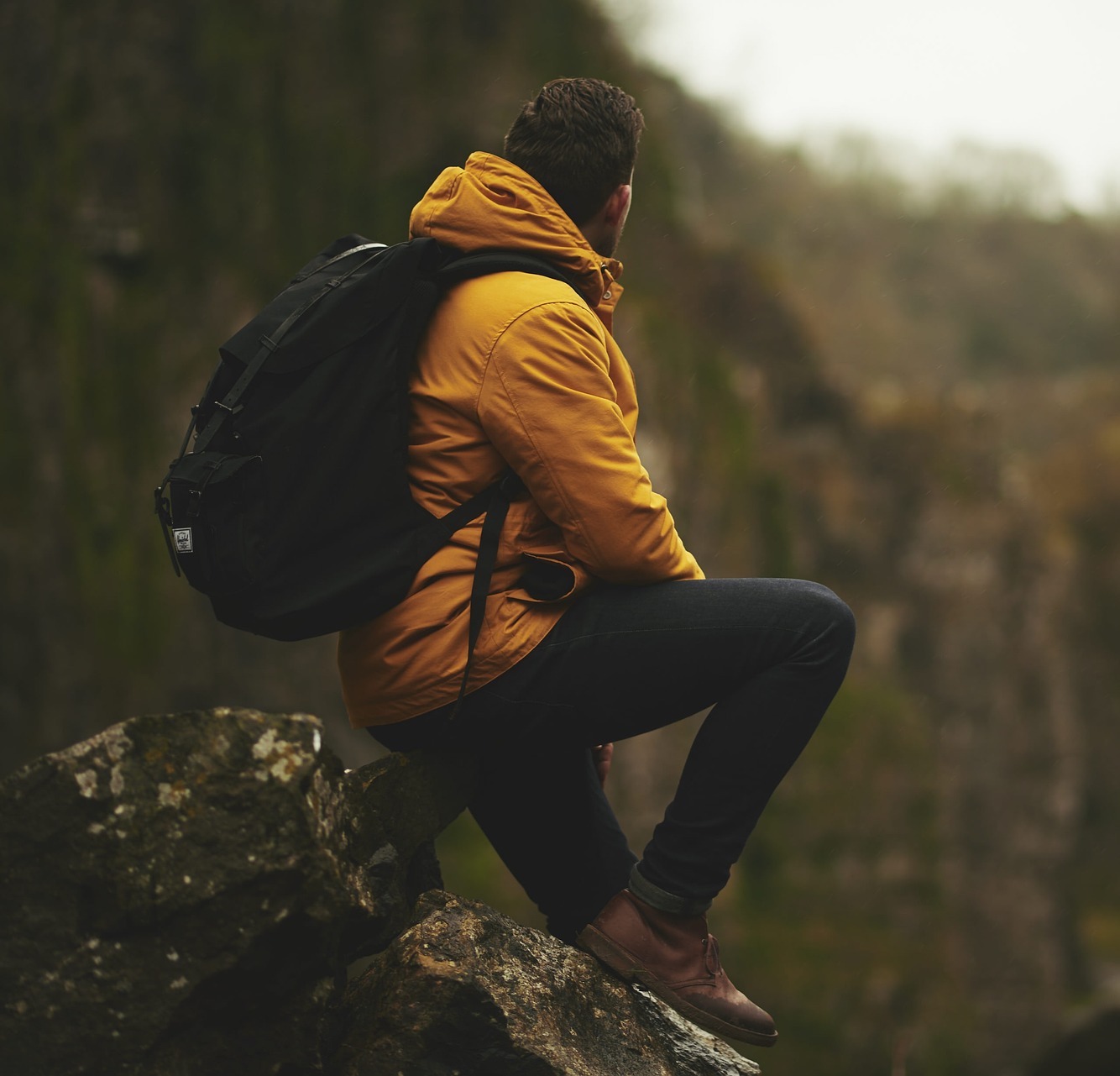Bushcraft Knives – the most important survival tool?
Someone who is not an avid outdoorsman might wonder why an experienced outdoor survivalist places such high value on his bushcraft knife and literally considers it to be the most basic and important survival tool a person can own in other than basic bushcraft knowledge?
Well, the answer to that question is that with a little bushcraft knowledge and a proper survival knife in hand, a person can build a shelter to protect himself from the ravages of the elements, obtain, process, and prepare food, and, in extreme cases, defend oneself from marauding predators. Consequently, instead of thinking of a high-quality bushcraft knife as an expensive accessory, you should think of it as an inexpensive insurance policy because the one time it saves your life and enables you to return to your family, you will consider every penny well spent!
In fact, in any land-based, outdoor survival, situation, there are three things you need to survive and they are: shelter from the elements, water, and food. Of the three, shelter is arguably the most important because a single night exposed to rain or cold or both can cause Hypothermia to set in which causes the victim to become so cold that they actually start to feel pleasantly warm while slowly drifting into unconsciousness which, in turn, leads to death.
On the other hand, heat can be just as powerful an enemy because a single day exposed to excessive sunshine can cause severe sunburn and a single day spent exposed to excessive heat can cause a state of Hyperthermia in which the human body is no longer able to cool itself which, in turn, again leads to unconsciousness and death. But, with a little bushcraft knowledge, a proper bushcraft knife, and depending on a person’s supply of materials, water, and food, a survivor can build a shelter to protect himself from both heat and cold ranging from a simple debris shelter to a Swiss Family Robinson, Tajh Mahal style, treehouse!
Here’s what you can do with a bushcraft knife
In addition, with a little knowledge and a proper Bushcraft knife, a person can obtain many different sources of food by creating deadfalls, spring traps, and, if you have a little wire in your survival kit (as you should), you can use it set snares for small animals. In addition, if you have a little monofilament line and a fish hook in your survival kit, you can use your bushcraft knife to create a “cane pole” fishing rod for fishing in moving water or deep water and, for wading in shallow, still, water, you can create a four-tined fishing spear that you can use to spear fish during the day and frogs during the night.
photo credit: bushcraftstuff.com
In addition, there are several types of fish and bird traps that can be easily constructed by using your bushcraft knife to cut some saplings and then use the bark you strip from them to bind them together. Last, Atlatals and Darts for hunting larger game at longer ranges are relatively easy and quick to create using your bushcraft knife.
True Stories
In fact, let me tell you a little story that exemplifies just how important a good bushcraft knife can be. First of all, in all of the years I have been hunting, fishing, and guiding professionally, I can honestly say that I have only been truly lost in the woods on two occasions in my entire life! On the second occasion, my compass led me home as I was seemingly stalked by a group of feral pigs (which I was bow hunting at the time) but, on the first occasion, my bushcraft knife and my survival kit enabled me to stay the night in relative comfort. FYI, the first incident occurred as I was deer hunting in the Blue Ridge Mountains here in western North Carolina in an area called the “Richlands” one December.
However, I was unfamiliar with the territory at that time and thus, as I spent the day searching for deer sign in the ridges and valleys there, I did pay attention to the various landmarks that would normally lead me home at the end of the day. But, after spending the day unsuccessfully locating a good place to set up my ground blind, I decided to stay on the old logging road I was on until twilight to see if perhaps a buck might wander along. Unfortunately, I forgot just how different things look after dark and thus, even though I did have a flashlight with me, I still became disoriented trying to navigate the maze of logging roads and apparently, I took a wrong turn somewhere. With rising anxiety, I began looking for an alternate route back to my campsite and, when I ran across a deep, boulder strewn gully, I reasoned that if I simply followed the gully down the side of the mountain, it would eventually lead me to the main dirt road that I had used to enter this area in my vehicle. From there, I figured that it would be a simple matter to find my way back to my campsite.
However, the terrain in that gully was SO ROUGH that, even with a flashlight in hand, I still took a couple of bad tumbles. I finally admitted to myself that if I continued on my present path, I was likely to end up severely injured and stranded and thus, I made the wise but difficult decision to climb back out of the gully and return up the mountain to my original starting point even though I really wanted to get back to my campsite.
Consequently, once I arrived back where I had started from on the old logging road, I proceeded to use my bushcraft knife to build a new campsite where I could comfortably spend the night and then find my way back out to my original campsite at the base of the mountain after dawn. Therefore, I first set about starting a fire by shredding a bit of one of the fire starter blocks that I carry in my survival kit for use as tender and then, I used my “flint” striker and the sharp edge on the spine of my bushcraft knife to spark the “flint” and start the tender and build up my fire from there. Then, once I had a source of heat and light going, I proceeded to cut some saplings and erect a lean-to facing my fire which I then covered with bark from a fallen Oak tree (which I used my bushcraft knife to pry loose) to both waterproof the lean-to and cause it to hold heat. Then, I filled the lean-to as full as it I could with dry leaves to serve as a makeshift blanket and then I used my bushcraft knife to chop some larger saplings that I used to build a reflector for my fire. Thanks to my bushcraft knife, I was able to survive a very cold night in relative comfort and then safely find my way back to my original camp site after dawn.
Therefore, in my opinion, everyone who enters the wilderness alone should carry a good quality bushcraft knife and know how to use it! In addition, since a proper bushcraft knife has to perform so many different tasks well such as carving, slicing, chopping, splitting, and occasionally, digging, it is extremely important that you choose a good quality knife that is properly designed for bushcraft use. Consequently, before choosing your knife, you should first consider the overall size of the knife, the length of the blade, the shape of the blade, the steel the blade is made from, as well as the material the handle and sheath are made from because all of these factors are of paramount importance to the performance of your bushcraft knife. Consequently, I have chosen my personal bushcraft knife with extreme care and I never, ever, enter the woods without it or my survival kit!
Some Great Options
If you’re looking for an immensely capable bushcraft knife for under $50, here are some great options to consider:
| Image | 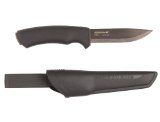 |
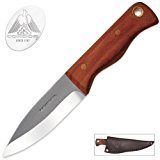 |
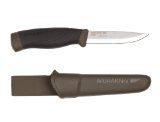 |
 |
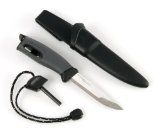 |
|---|---|---|---|---|---|
| Manufacturer | Morakniv | Condor Tools & Knives | Morakniv | Cold Steel | Light My Fire |
| Size | 0.125/4.3-Inch | 0.125/4.1-Inch | One Size | ||
| Title | Morakniv Bushcraft Carbon Fixed Blade Knife with Sandvik Stainless Steel Blade, Black, 0.125/4.3-Inch | Condor Tool and Knife Bushlore 4.375-Inch Drop Point Blade, Walnut Handle with Leather Sheath (Plain) | Morakniv Companion Heavy Duty Knife with Sandvik Carbon Steel Blade, Military Green, 0.125/4.1-Inch | Cold Steel Pendleton Lite Hunter Black Poly Handle | Light My Fire Swedish FireKnife Fixed Blade Knife with 10 cm (3 Inch) Sandvik Stainless Steel Blade and Swedish FireSteel Fire Starter – Black |
| Price | $33.50 | $29.60 | $15.40 | $10.93 | $25.95 |
| Height | 1.25 inch | 1.25 inch | 1.25 inch | 1.5 inch | |
| Weight | 0.53 pound | 0.8 pounds | 3 pound | 0.3 pound | 0.21 pound |
| Width | 1.25 inch | 1.25 inch | 2.38 inch | 1.77 inch | |
| Length | 9.5 inch | 9.5 inch | 9 inch | 8.86 inch | |
| Rating |  |
 |
 |
 |
 |
| Link | More Info | More Info | More Info | More Info | More Info |


